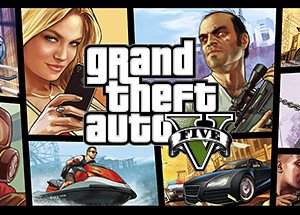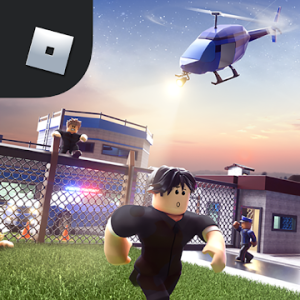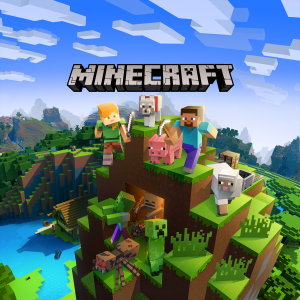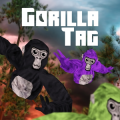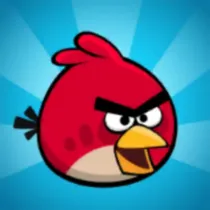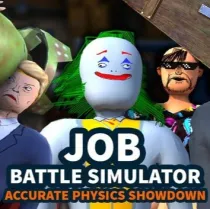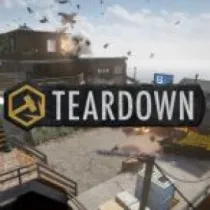Gorilla Tag
Gorilla Tag review
I remember the moment I put on my VR headset and launched Gorilla Tag with palpable excitement. I was curious about an experience that promised something entirely new, a departure from conventional gaming mechanics. The initial encounter was filled with anticipation as I prepared to embody a nimble simian navigating an interactive world. My heart raced when I discovered that the game relied entirely on my physical movements and coordination. That blend of exhilaration and slight apprehension drew me into a reality where my actions dictated my progress in a way that felt raw and genuine.
Embracing a World of Unique Movement
Gorilla Tag is not your typical VR game. Instead of using traditional controllers or teleportation-based movement, the game relies on a motion system that transforms my arms into dynamic tools for locomotion. In this game, every swing, push, and leap is essential. I had to trust my instincts, ensuring that my movements translated fluidly into on-screen actions. The unique movement system, which centers on the momentum and precision of arm swings, pushed me to rethink the connection between physical exertion and game mechanics. There was an organic challenge in perfecting this system, a challenge that kept me fully immersed and constantly engaged.
Exploring the Mechanics of Physicality
The core mechanics of Gorilla Tag revolve around an innovative physical simulation. This game does not hold your hand; instead, it places the responsibility squarely on your shoulders—or, more accurately, on your arms. I soon learned that controlling my virtual ape was akin to real-life parkour. Each jump and climb required a degree of finesse that made me feel like I was learning a new form of movement. The skills I developed through trial and error were immensely rewarding, as they allowed me to refine my approach and master the game’s various levels and challenges.
Delving into Multiplayer and Community Interaction
A significant aspect of Gorilla Tag is its vibrant multiplayer environment. From the moment I joined a session, I connected with players who shared a passion for experimentation and unstructured fun. The communal spirit was palpable, and I quickly realized that every interaction—whether a friendly chase or a playful competition—enhanced the overall experience. The game creates a space where every participant contributes to a collective narrative of playful chaos. Conversations about strategies, funny mishaps, and moments of synchrony all enriched my understanding of the game’s dynamics and its unique community culture.
A Look at the Engaging Level Design
The levels in Gorilla Tag are carefully crafted to encourage continuous movement and exploration. I found that the design of each environment pushed my physical capabilities to their limits. The terrain varied from open spaces that allowed for wide leaps to more enclosed, intricate passages where precision was essential. These settings not only provided a sense of progression but also maintained an element of surprise at every turn. I often marveled at how seemingly simple vistas housed layers of thoughtful design, with each obstacle challenging me to adjust my rhythm and approach.
The Thrill of Parkour Dynamics
One of the aspects that truly captivated me was the game’s parkour-like movement. In Gorilla Tag, every shift in momentum feels like a mini-adventure in its own right. I reveled in the adrenaline rush that accompanied each leap from one surface to the next. The intuitive physics allowed me to experiment with different trajectories and speeds, leading to a feeling of mastery over an unpredictable environment. The thrill of landing a particularly tricky maneuver, and the satisfaction of progressing further because of it, added a level of immersion that few VR titles have achieved.
Getting to Know the Game's Aesthetic World
The visual style of Gorilla Tag is deceptively minimalistic yet incredibly effective. I appreciated the clean, almost abstract design that allowed my mind to concentrate on movement rather than getting overwhelmed by excessive details. The environments are bathed in natural hues, which evoke a sense of freedom reminiscent of sprawling outdoor playgrounds. The simple textures and gentle lighting work hand in hand to create a setting that is both uncluttered and inviting. This deliberate aesthetic choice complemented the gameplay, emphasizing movement and spontaneity, and inviting me to focus on refining my skills.
Understanding the Soundscapes and Audio Cues
Beyond visuals, the game’s sound design plays a crucial role in shaping the overall experience. I noticed that every movement produced a distinct sound that echoed the physicality of my actions. The rustle in the simulated foliage and the ambient noises of distant chatter among players added layers to the immersive quality of the experience. Each vocal cue, whether it was a cheer after a smooth leap or a playful taunt during a friendly chase, deepened my involvement. The audio design reinforced the playful atmosphere and made me acutely aware of my surroundings, enhancing my concentration during moments of split-second decision-making.
Immersion Through VR Hardware Integration
The game’s integration with VR hardware transforms the experience into one of tactile realism. I was amazed at how the motion controllers translated my arm movements directly into the game with a high degree of accuracy. This close integration meant that even slight adjustments in posture or grip could result in a dramatically different outcome in the game. The sensitivity of the motion tracking turned my body into both a controller and an avatar, a dual role that blurred the lines between physical action and virtual consequence. This intimate connection with my in-game persona helped solidify my presence in the Gorilla Tag universe.
Examining the Role of Strategy and Tactics
While on the surface Gorilla Tag may appear to be a free-form chase game, there exists a subtle layer of strategy beneath its playful exterior. I quickly learned that understanding the physics and momentum could give me an edge during pursuits and evasive maneuvers. There is a tactical nuance in choosing when to accelerate or decelerate, how to time a leap for a strategic advantage, or when to cooperate with another player to outmaneuver an opponent. These moments of calculated risk added a dimension of cerebral engagement to the game. I found myself analyzing every move, not only to improve my personal skills but also to anticipate the actions of others in a constantly shifting arena.
Reflecting on the Learning Curve and Personal Growth
My journey in Gorilla Tag was as much about personal growth as it was about mastering the game itself. The learning curve, marked by repeated falls and unexpected rebounds, soon transformed into a series of small victories that boosted my confidence. The physical challenge pushed me to explore my own capabilities in VR, encouraging a blend of endurance, coordination, and strategy. I began to view each setback as an opportunity to refine my technique. Over time, the frustrations gave way to triumphs as I sported improved agility and developed a more profound understanding of virtual body dynamics. This transformative experience challenged me to become more attentive to the subtleties of movement and timing, fostering a practical sense of persistence and adaptability.
Investigating Customization and Role Adaptation
Another facet of Gorilla Tag that caught my attention was the scope for customization and role adaptation. The game provides a platform for players to explore various roles within its dynamic ecosystem. I experimented with different movement strategies, adopting an approach that was more defensive during some sessions and more aggressive during others. The freedom to choose and switch strategies based on the environment or the behavior of other players made each session feel fresh. This variety meant that I was continually challenged to re-think and re-adapt my play style, ensuring that my experience remained both engaging and unpredictable. On several occasions, I even ventured into cooperative strategies that involved communication and shared tactics, thereby enriching the complexity of the gameplay.
Encountering Moments of Pure Joy and Spontaneity
Perhaps the most rewarding element of Gorilla Tag is the spontaneous joy that emerges from each session. There are moments when, despite the challenges, the fundamental pleasure of movement and camaraderie takes center stage. I have found that some of the most memorable experiences occur when everything seems to fall perfectly into place—a flawlessly timed leap, a serendipitous encounter with another player, or an unexpected route that provides a sudden burst of momentum. These instances of pure, unadulterated fun remind me of the beauty of unstructured play. The game artfully balances controlled technique with the randomness of physical play, encouraging me to embrace each fleeting moment of exhilaration with a sense of wonder and delight.
Assessing the Overall Impact on My VR Experience
Ultimately, Gorilla Tag has left an indelible mark on my relationship with VR gaming. The game invites an exploration of physicality that goes far beyond pressing buttons or viewing pre-rendered animations. Instead, it delivers a deeply personal and interactive experience that is both challenging and liberating. Every session pushes me to synchronize my body movements with my gaming instincts, creating a harmonious blend of sport and play. The innovative mechanics and attention to detail in both design and sound have reshaped my perspective on what a VR game can offer. Through its inventive approach to movement, strategy, and social interaction, Gorilla Tag has expanded the horizons of my virtual adventures.
Pros:
- Immersive VR movement experience that blends physicality with gameplay mechanics
- Innovative physics-based controls that create a unique and engaging challenge
- Highly active multiplayer community that fosters social interaction and spontaneous fun
- Encourages physical exercise and active movement in a gaming context
- Simple yet effective level design that promotes creativity and strategic navigation
- Offers diverse gameplay experiences through cooperative tactics and evolving strategies
Cons:
- Steep initial learning curve that may intimidate new players
- Demands ample physical space and can be physically intensive
- Motion tracking and technical glitches may occasionally disrupt the experience
Graphics 4
Gameplay 4
Controls 5
Replay Value 5
How much storage do you need?
 Gorilla Tag
Gorilla Tag RELATED APPS
Best Games
LATEST ARTICLES
- Mastering the Blood Ritual: Tactical Strategies for Conquering Mohg's Arena Facing one of the most notorious encounters in Nightreign's latest installment, players are presented with a battle that demands strategic...
- Hannah White
- 2025-12-07 05:04:37
- Sweden’s Gaming Boom: Uncovering 2025’s Top Search and Subscriber Trends This article delivers an entirely original outlook on the gaming trends of 2025, highlighting the games that captured the most...
- Christopher Wagner
- 2025-12-07 05:04:34
- Stranger Things and the 2025 Streaming Surge: Charting a Record-Breaking Journey The streaming landscape in 2025 has been marked by unprecedented success, with multiple series delivering record-breaking numbers and captivating audiences...
- Annemie Gillis
- 2025-12-07 05:04:33



